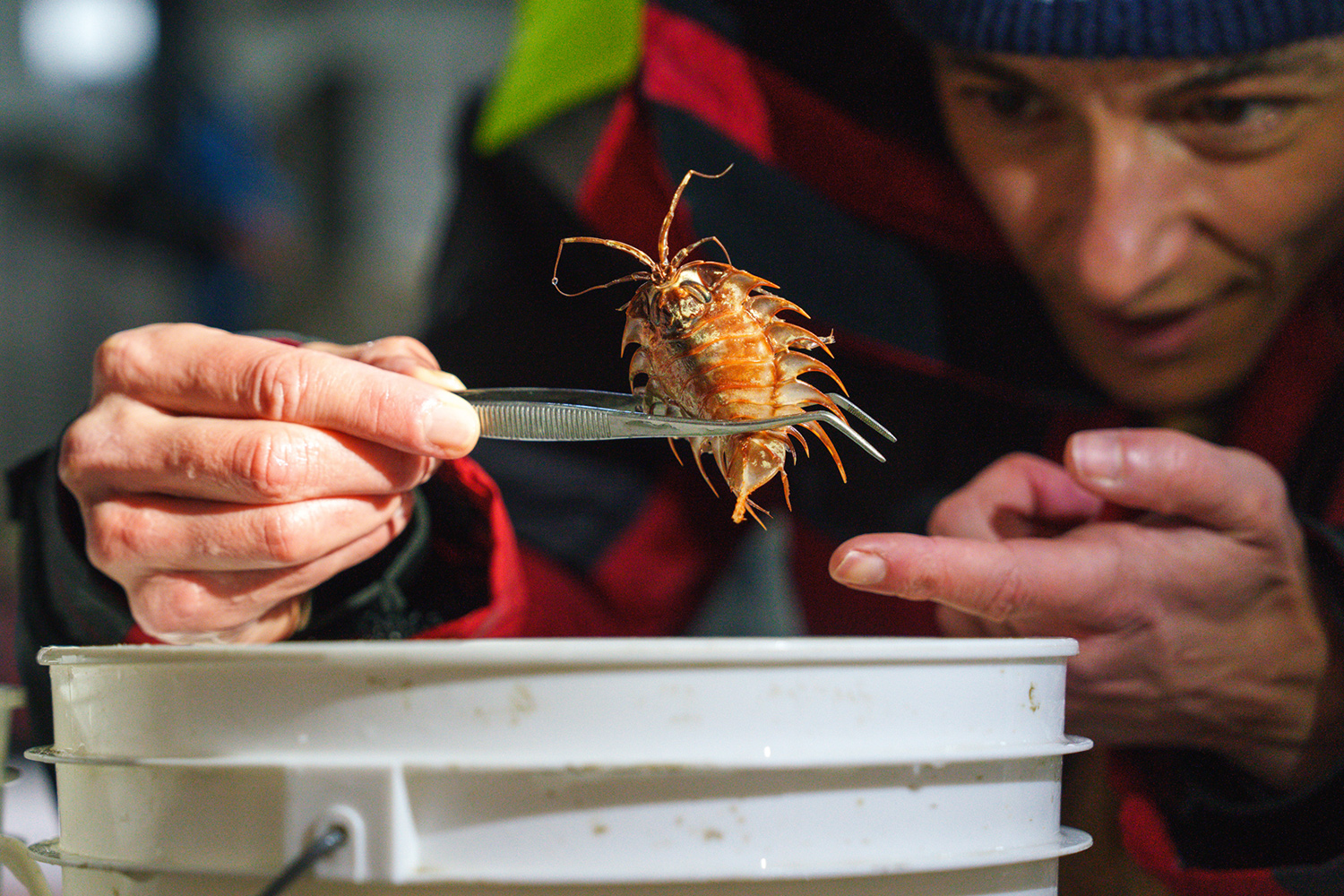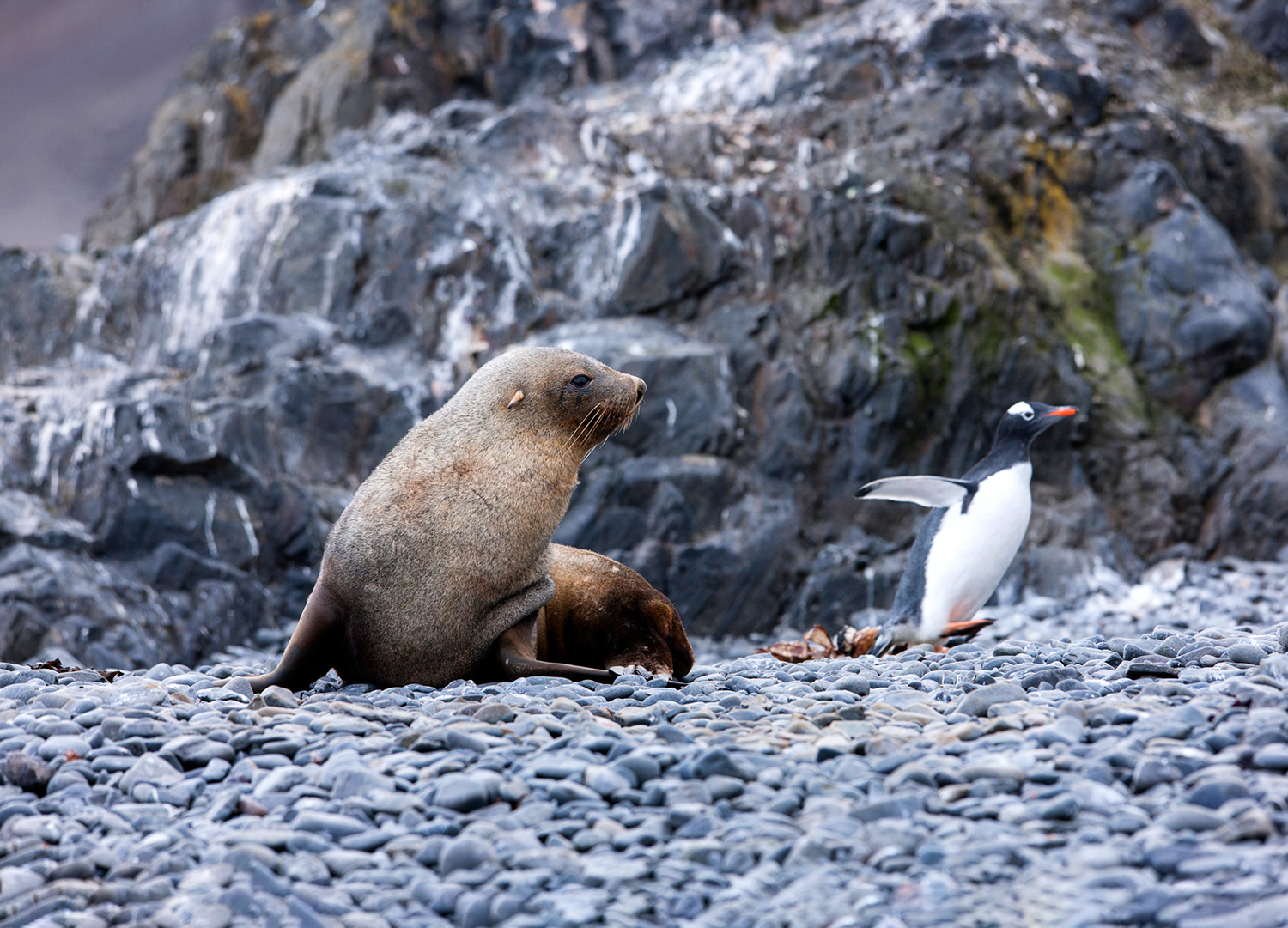Life Under the Ice
Scientists didn’t think many living things could survive under thick sea ice. They were wrong!

© Courtesy of Schmidt Ocean Institute
An octopus rests on the seafloor 3,773 feet (1,150 meters) below the surface of the Bellingshausen Sea of Antarctica.
Experts used to think there weren’t very many living things in the seas around Antarctica. After all, these waters are dark, freezing cold, and mostly covered in thick sheets of ice. But when scientists got a rare chance to explore one of these seas, they discovered that it was full of life!
The opportunity came in January 2025, when a huge iceberg broke from what’s called an “ice shelf” off the coast of Antarctica. For the first time ever, it became possible to explore the water at this location.

© Courtesy of Schmidt Ocean Institute
Scientists were working aboard this ship, called Falkor (too), when a fallen ice shelf gave them a chance to investigate a whole new area of the sea.
Scientists acted quickly, sending a remote vehicle down to the seafloor. When a vehicle is “remote,” it means humans control it from somewhere else, such as a ship.
“[We] went for it so we could look at what was happening in the depths below,” said Dr. Patricia Esquete, who works in the Centre for Environmental and Marine Studies (CESAM) and the Department of Biology (DBio) at Portugal’s University of Aveiro. The remote vehicle explored the seafloor for eight days—and what it found surprised the scientists.

© Courtesy of Schmidt Ocean Institute
Scientists found a large sponge and several soft-bodied animals called anemones under the sea near Antarctica.
Under the freezing cold waters, there were corals and sponges that helped support a variety of animals, including octopuses, icefish, and huge sea spiders.
“We didn’t expect to find such a beautiful, thriving ecosystem,” Esquete said. “Based on the size of the animals, the communities we observed have been there for decades, maybe even hundreds of years.”
Scientists are trying to figure out how these animals live in such a difficult location. Most living things need oxygen, nutrients, and sunlight to survive. Scientists know that deep-sea animals can survive with no sunlight and little oxygen. Nutrients float down to them from the surface of the sea. But the Antarctic deep-sea animals couldn’t have gotten their nutrients from the surface because it was covered in ice until very recently.

© Courtesy of Schmidt Ocean Institute
Scientist Patricia Esquete inspects an isopod that was taken from the Bellingshausen Sea and may be a new species. An isopod is a crustacean, like a shrimp or crab.
So how did the nutrients reach the animals? Since ocean currents can carry nutrients, scientists believe it’s possible that currents brought the nutrients to the seafloor under the ice, allowing life to exist there.
When the iceberg broke off, it made it possible for scientists to learn something they didn’t know before. But it was also a reminder that the world is getting warmer due to climate change. As temperatures rise, icebergs that have been frozen for almost one million years will continue to break, leading to a rise in sea levels.







